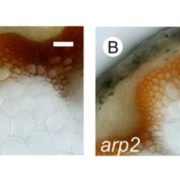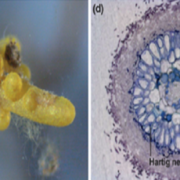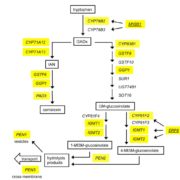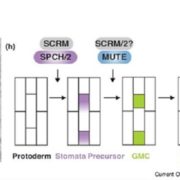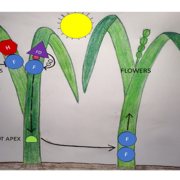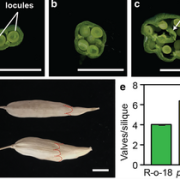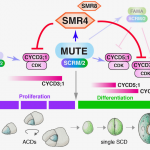Innovation, conservation, and repurposing of gene function in root cell type development (Cell)
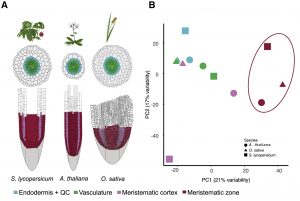 Plants demonstrate a gorgeous diversity in cell types to adapt to their unique environments. Certain cell types, such as the epidermal, cortex, and vascular cells within plant roots, or the classically-defined root developmental zones (meristematic, elongation, and maturation), are homologous in angiosperms. However, how tightly they are conserved across species is unknown. To give insight into the molecular conservation of diverse root cell types across plants, Kajala et al. performed a wide-scale study using translating ribosome affinity purification (TRAP) on a variety of cell types in different developmental stages from tomato, rice, and Arabidopsis. Using the TRAP method, cell type-enriched groups (CTEGs) that display significant translatome enrichment between cell types were analyzed. Through the power of this technique across multiple plant species under different conditions, the authors made many interesting discoveries. One is the “repurposing” of genes: genes or networks that have been adapted for different functions, such as nitrogen regulation within the tomato exodermis, a root tissue not present in Arabidopsis. The authors also observed conservation or partial conservation of xylem gene regulators. A final noteworthy conclusion is the variation in translatomes between sterile and soil growth conditions of Arabidopsis, and between Arabidopsis root translatomes and those of other species. (Summary by Benjamin Jin) Cell 10.1016/j.cell.2021.04.024
Plants demonstrate a gorgeous diversity in cell types to adapt to their unique environments. Certain cell types, such as the epidermal, cortex, and vascular cells within plant roots, or the classically-defined root developmental zones (meristematic, elongation, and maturation), are homologous in angiosperms. However, how tightly they are conserved across species is unknown. To give insight into the molecular conservation of diverse root cell types across plants, Kajala et al. performed a wide-scale study using translating ribosome affinity purification (TRAP) on a variety of cell types in different developmental stages from tomato, rice, and Arabidopsis. Using the TRAP method, cell type-enriched groups (CTEGs) that display significant translatome enrichment between cell types were analyzed. Through the power of this technique across multiple plant species under different conditions, the authors made many interesting discoveries. One is the “repurposing” of genes: genes or networks that have been adapted for different functions, such as nitrogen regulation within the tomato exodermis, a root tissue not present in Arabidopsis. The authors also observed conservation or partial conservation of xylem gene regulators. A final noteworthy conclusion is the variation in translatomes between sterile and soil growth conditions of Arabidopsis, and between Arabidopsis root translatomes and those of other species. (Summary by Benjamin Jin) Cell 10.1016/j.cell.2021.04.024


